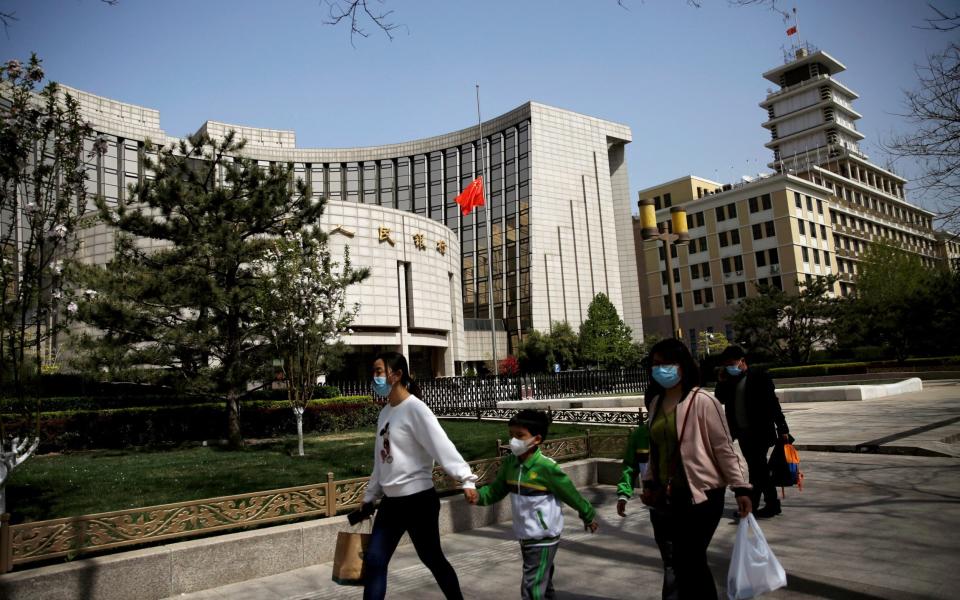China cuts interest rates to fight economic impact of zero-Covid policy

China’s central bank has cut interest rates in a bid to fight the economic impact of its "zero-Covid" policy.
The People’s Bank of China cut the benchmark one-year loan prime rate to 3.8pc from 3.85pc, the first time it has reduced rates since April 2020 when the pandemic peaked in the country.
The benchmark rate influences corporate and household loans, with the cut aimed at lowering the cost of borrowing to stimulate China’s economy.
Despite rapidly recovering from the initial hit from Covid-19, the Chinese economy has shown signs of a slowdown since the summer amid indications consumer demand is waning.
A zero-tolerance lockdown policy, which has resulted in numerous small-scale shutdowns, has weighed on activity, as has a continued crackdown in sectors such as real estate.
Reducing interest rates may have the effect of driving up inflation in the country, but the central bank has sought to avoid this by withdrawing liquidity in other parts of China’s financial system.
Writing ahead of the decision to cut, ING China economist Iris Pang said the injection “is not a lot, but enough to push down interest rates for the whole curve, which supports economic growth”.
The move comes two weeks after the central bank cut the reserve requirement ratio (RRR), the amount of cash that banks must hold as reserves, to an average of 8.4pc across banks of all sizes, and 10.5pc for the largest lenders. The move unlocked around $190bn in liquidity.
It has also raised the amount of foreign reserves financial bodies must hold, a move that is likely to weaken the renminbi and support Chinese exporters.
Chinese officials have focused on stability as an economic goal in recent months as questions swirl around the health of the world’s second-largest economy.
Beijing’s target for growth in 2022 is lower than this year’s, offering the ruling Communist Party more room to press ahead with an economic reform agenda.
The decision by the central bank to cut came as a surprise to many China-watchers, with about a quarter of analysts polled by Reuters anticipating rates would be unchanged.
Jane Foley, global forex head at RaboBank, said: “Recent indicators including retail sales and investment growth have slowed in China and further monetary easing could follow. That said, the move does raise some concern that the authorities could stimulate the country’s already highly leveraged property market.”
Jeffrey Haley, from broker Oanda, said the move showed China is “blinking” in the face of waning growth.
“Far more loans are based on the one-year LPR than the five-year, so the move is a concrete signal that China is moving into supportive monetary policy,” he said.

 Yahoo Finance
Yahoo Finance 